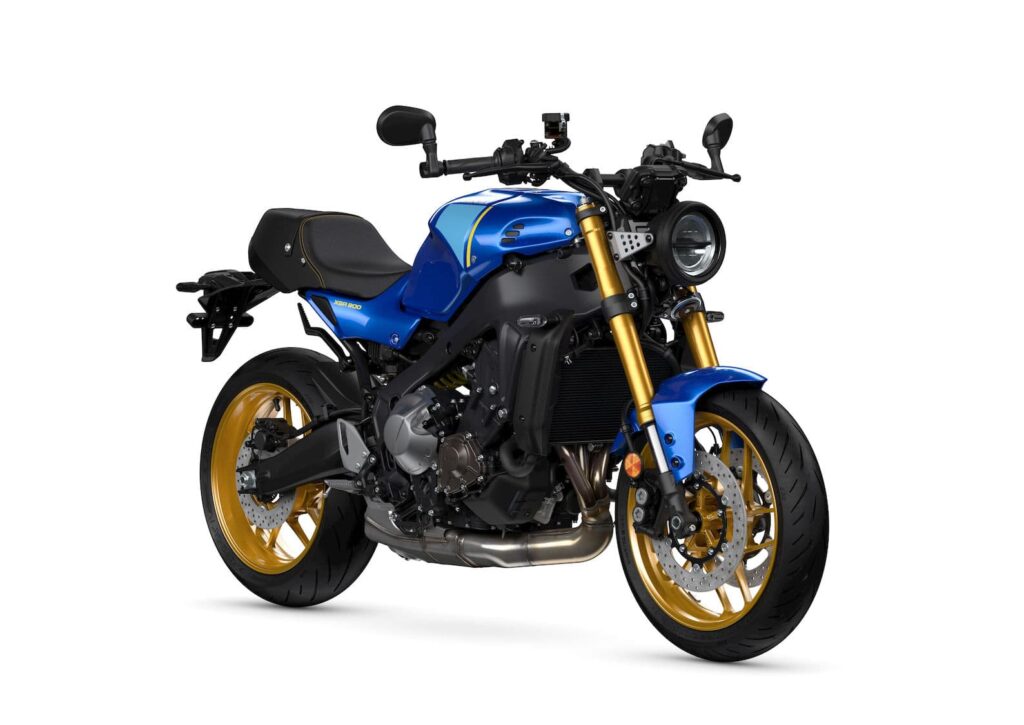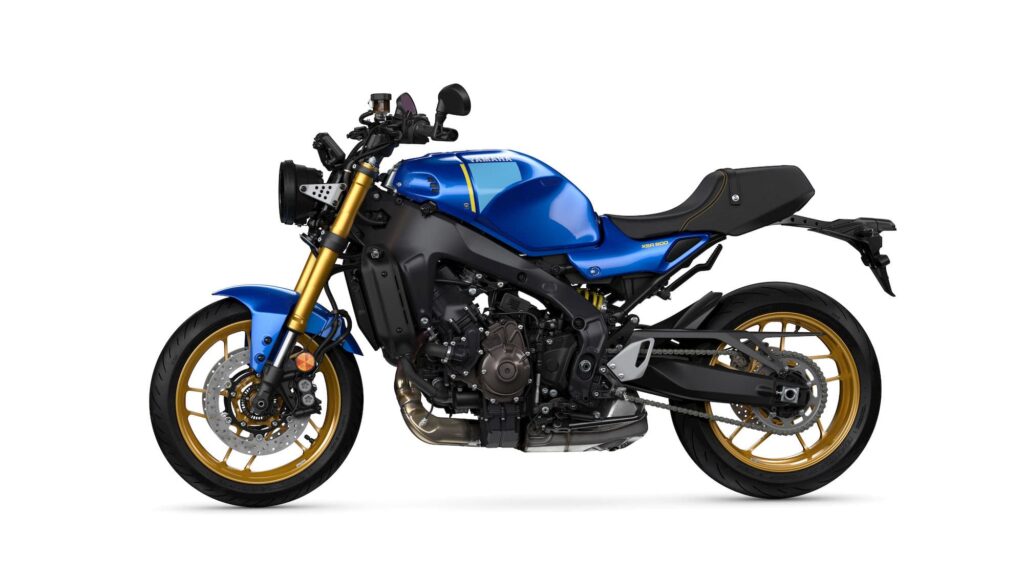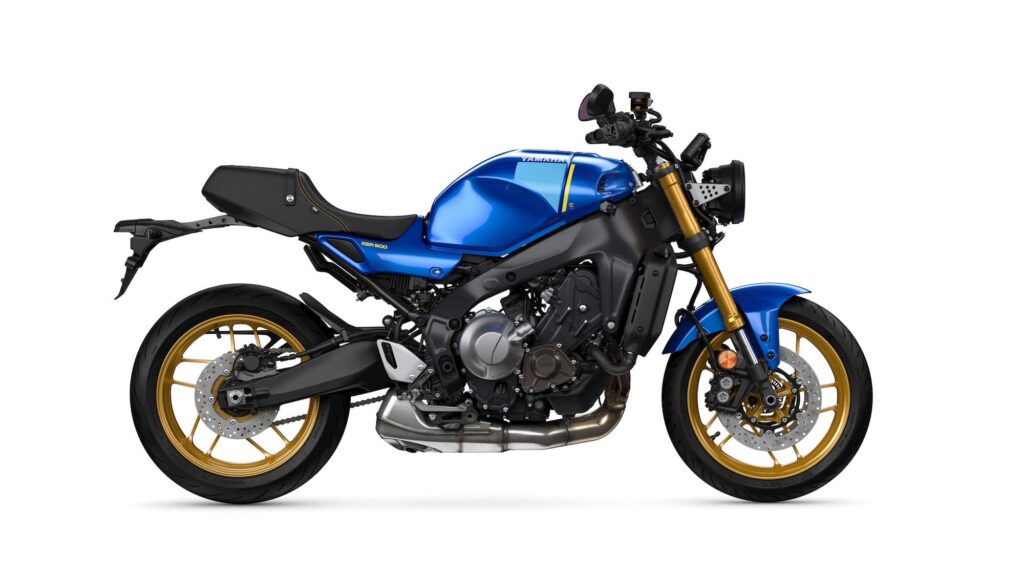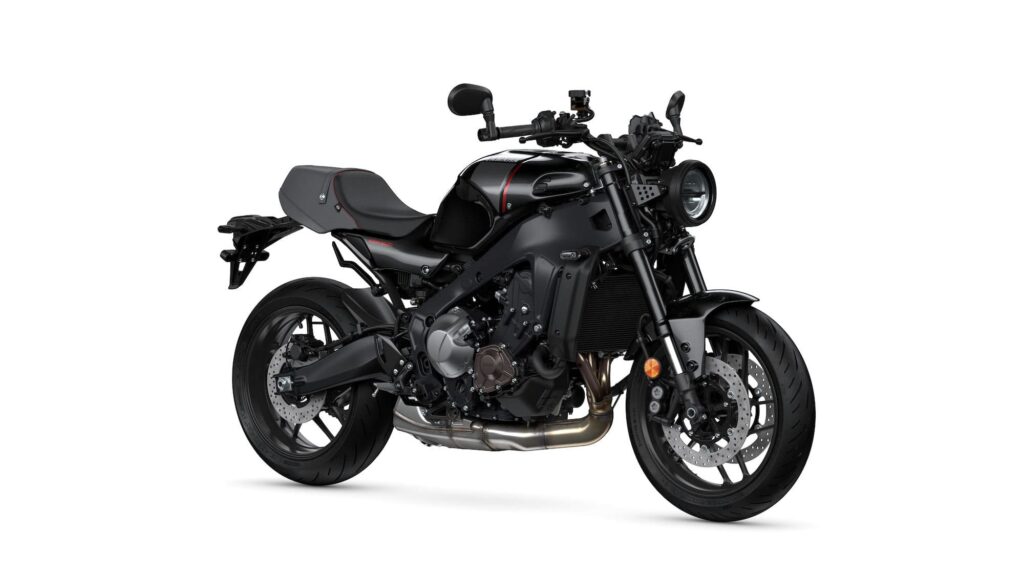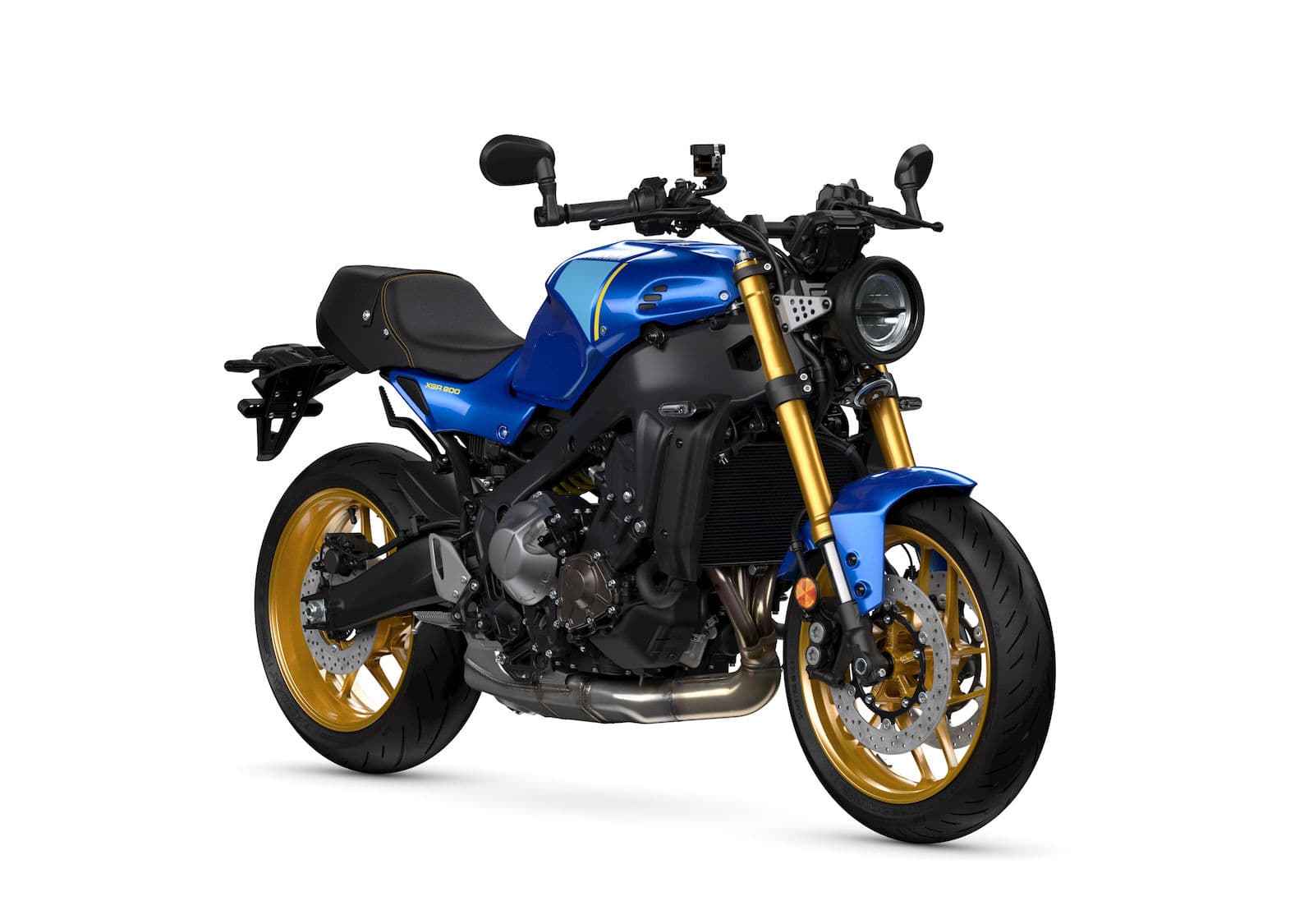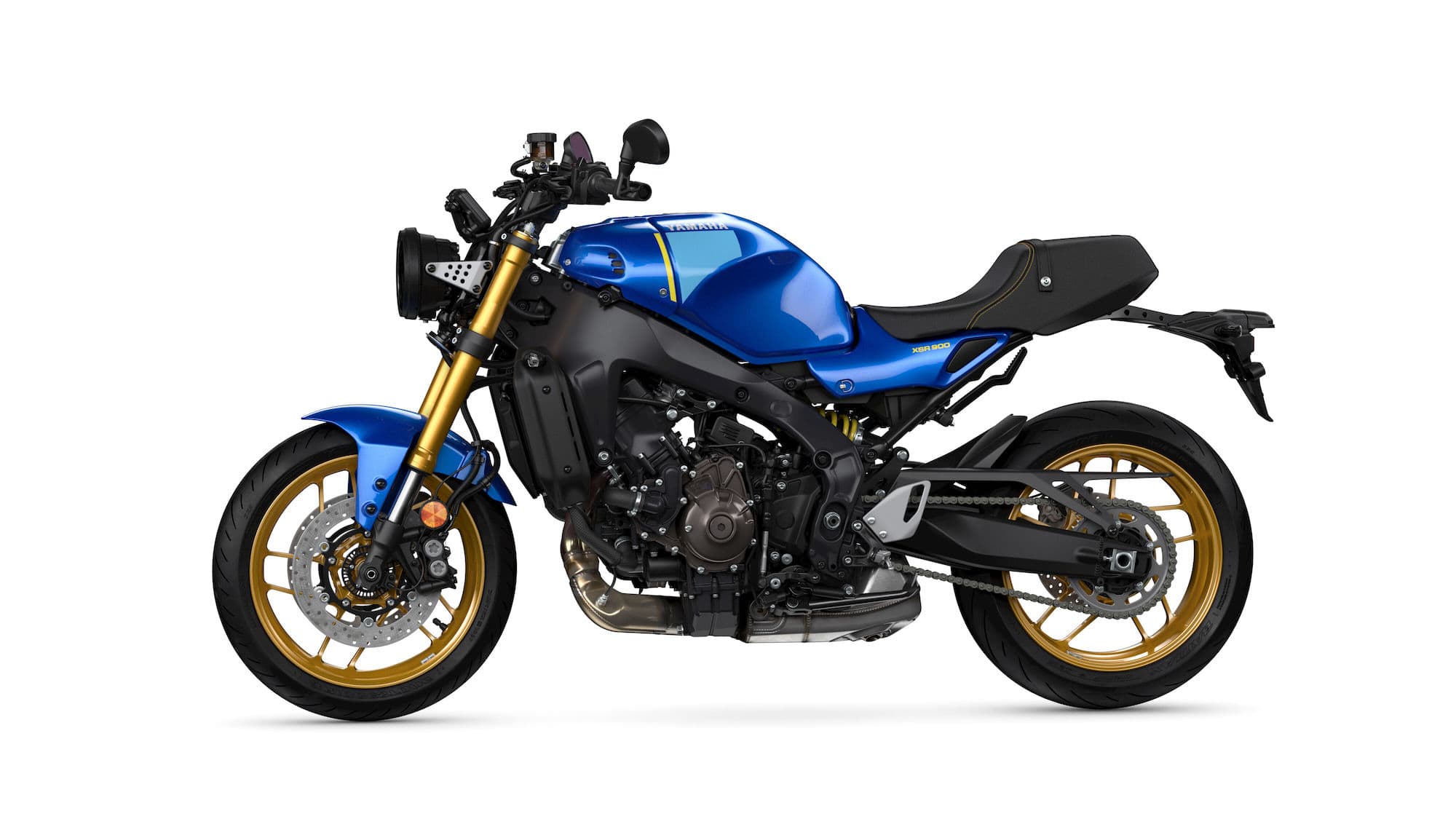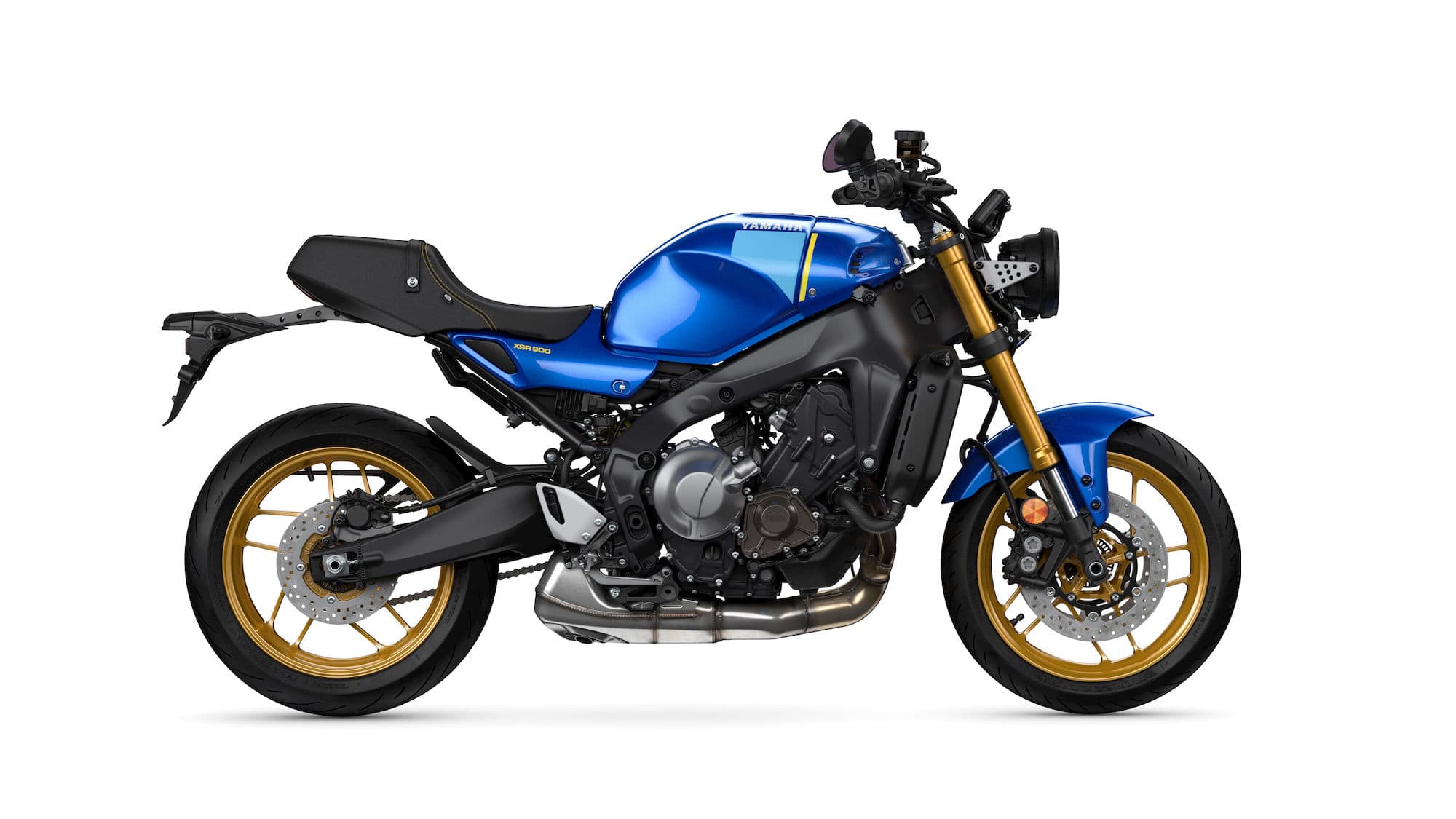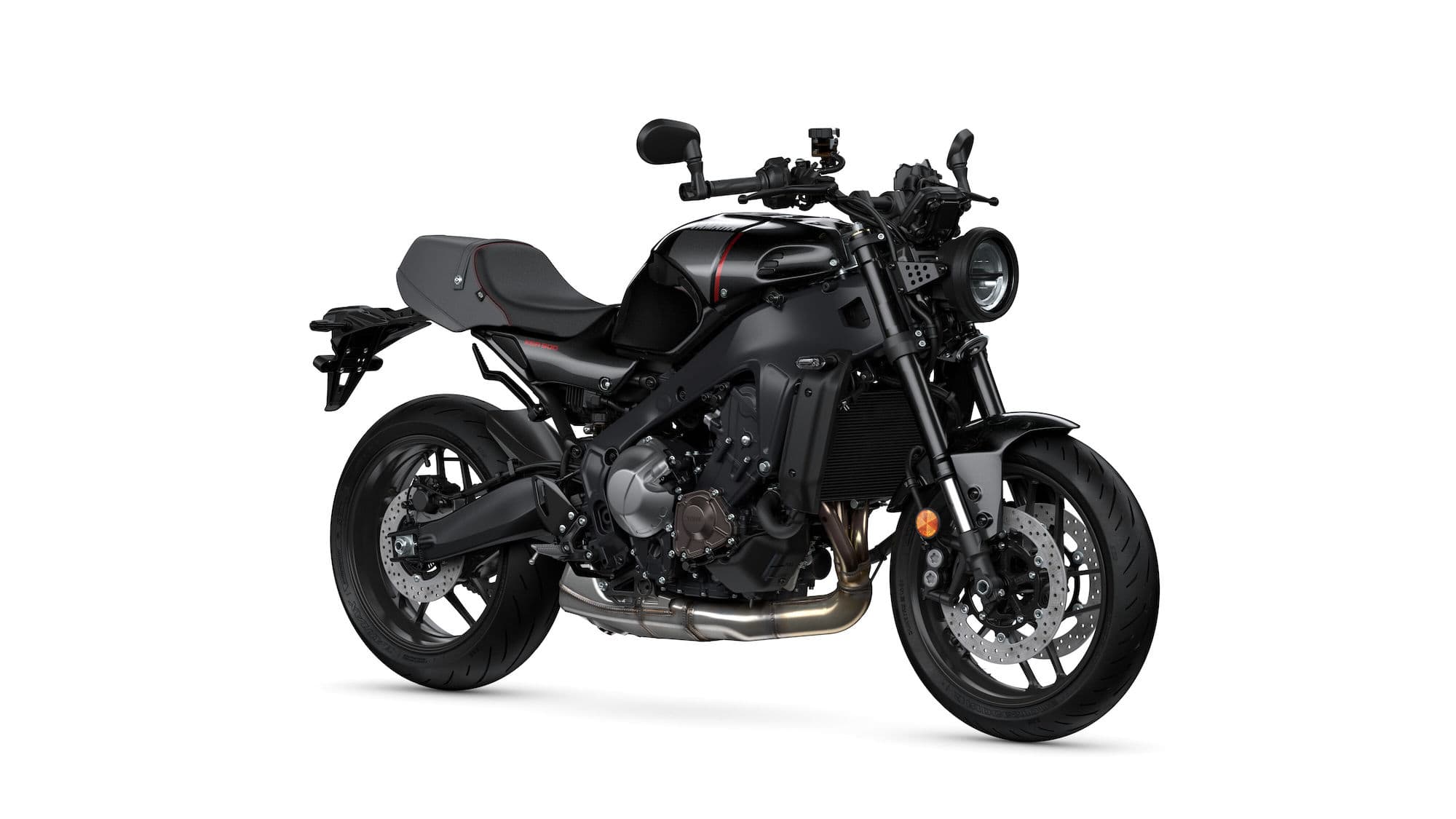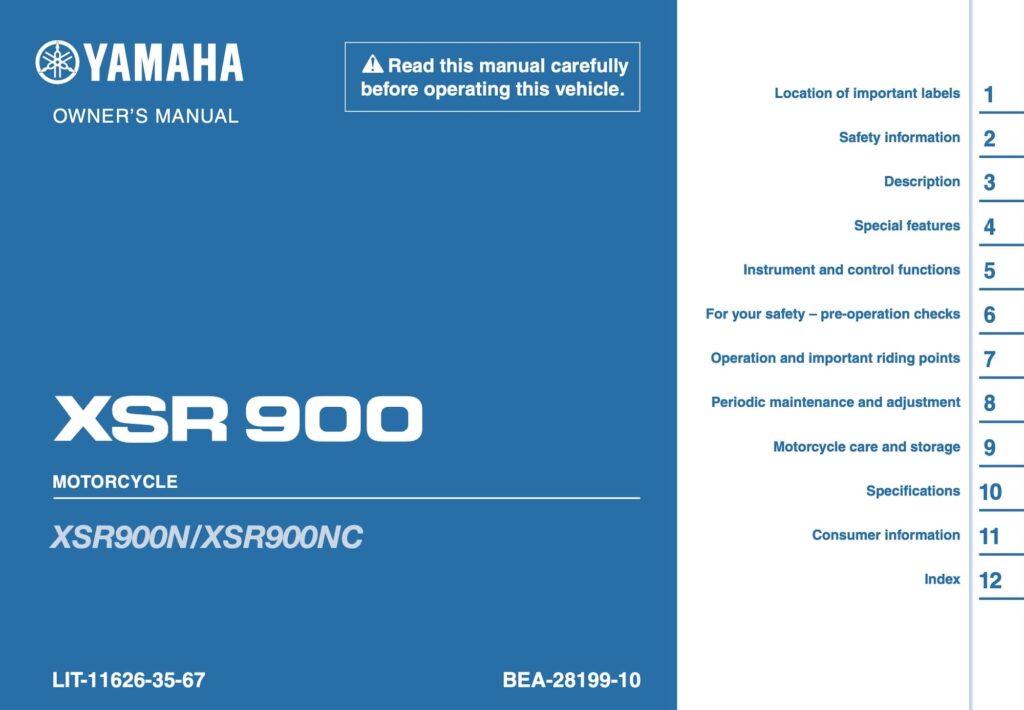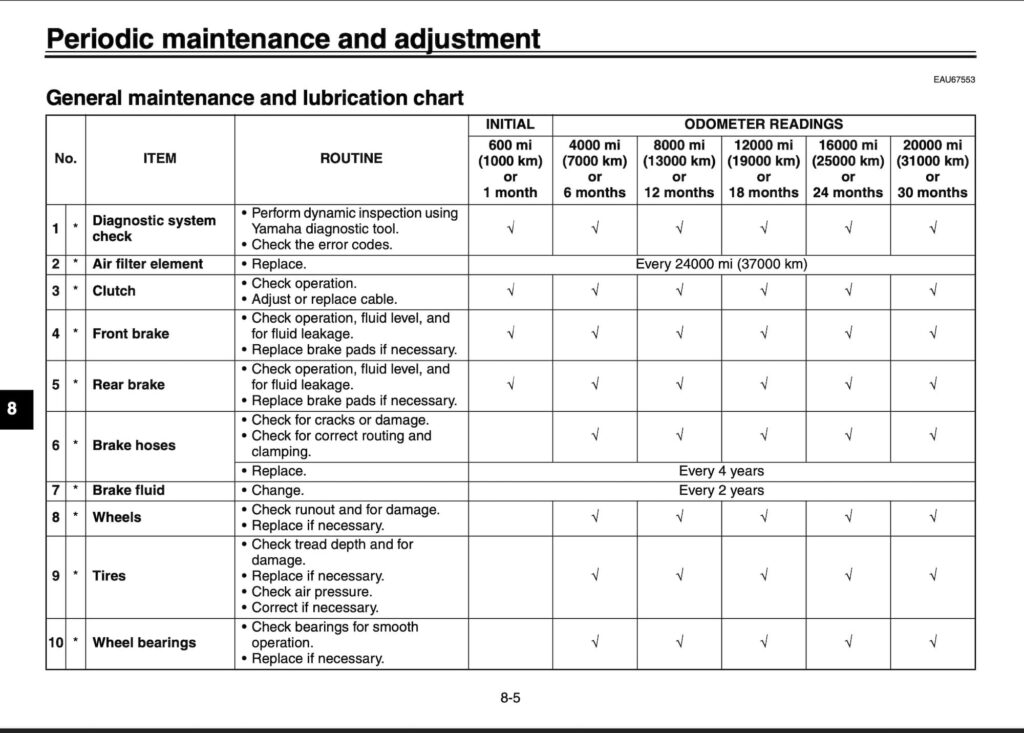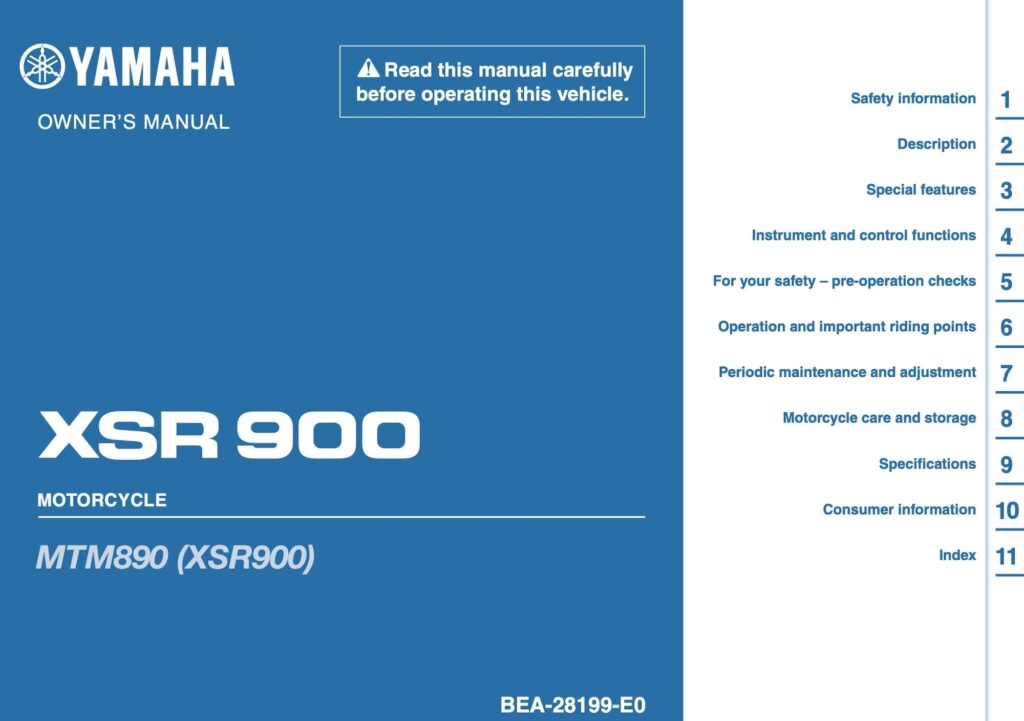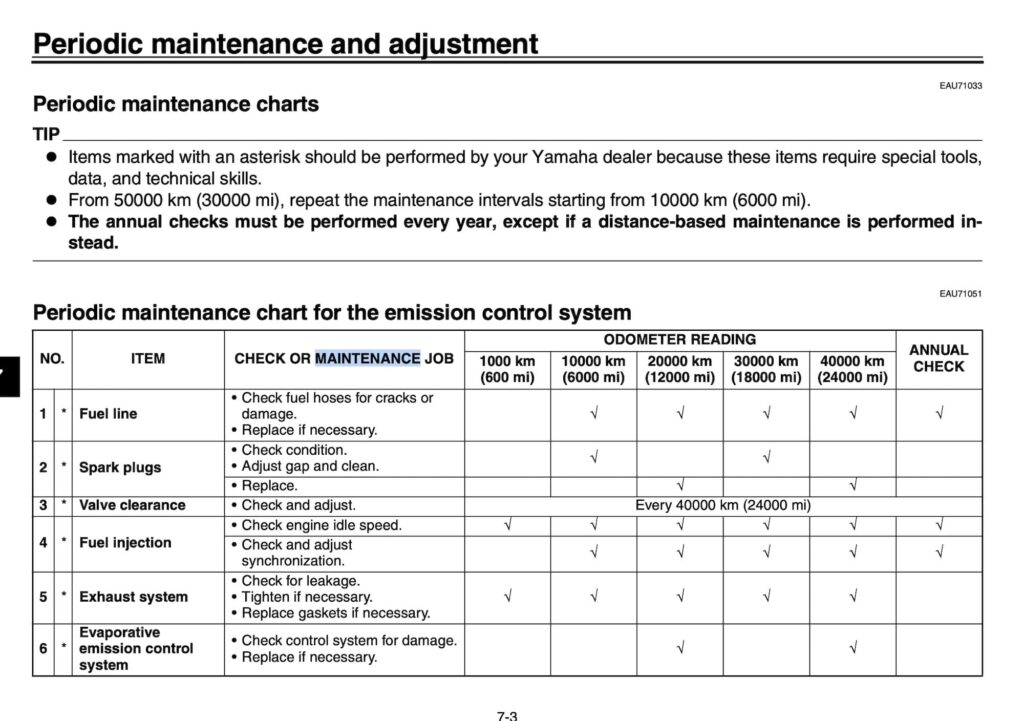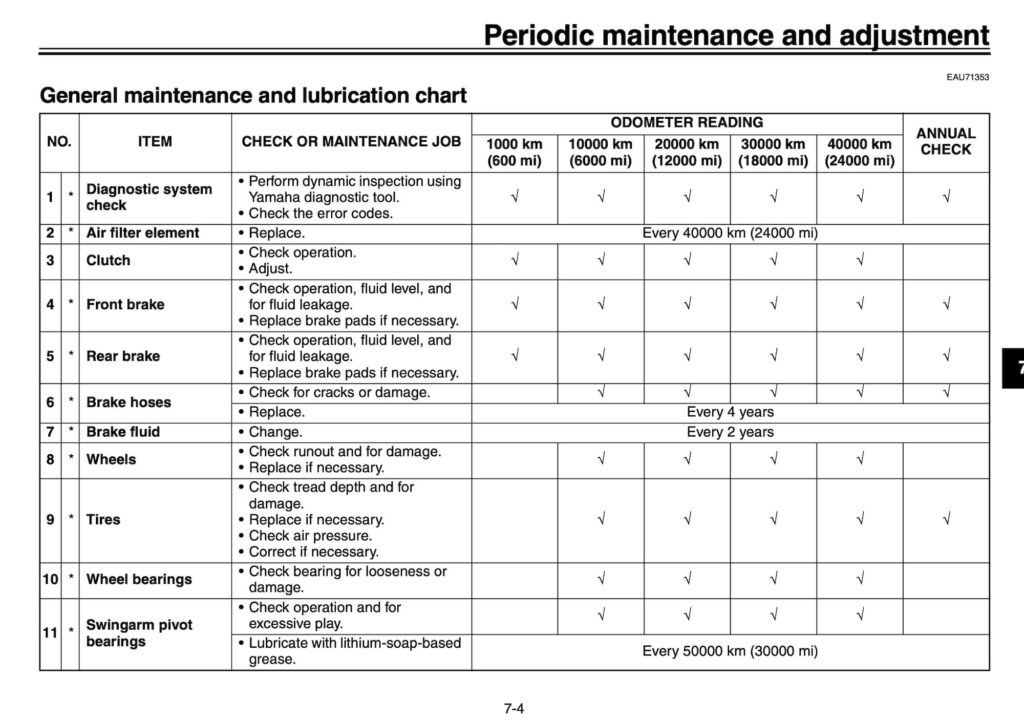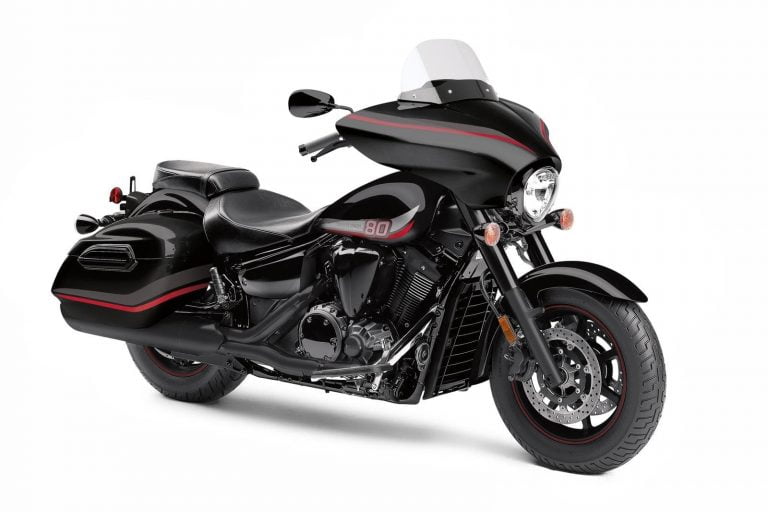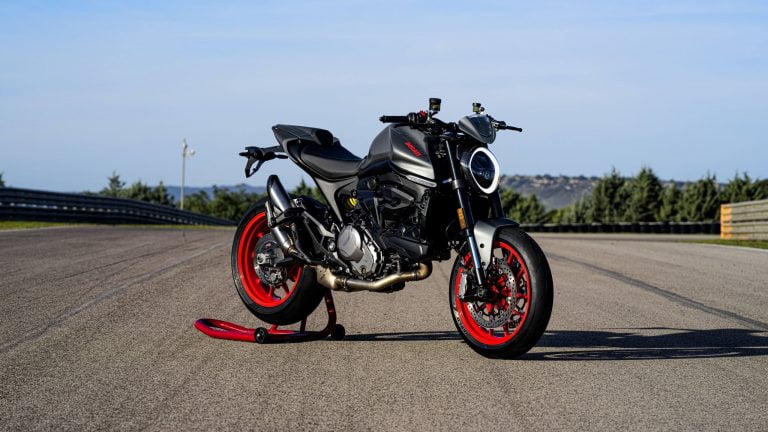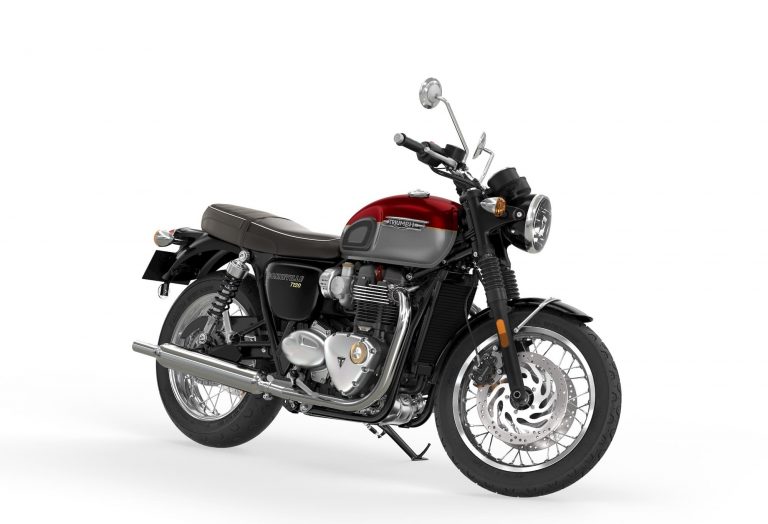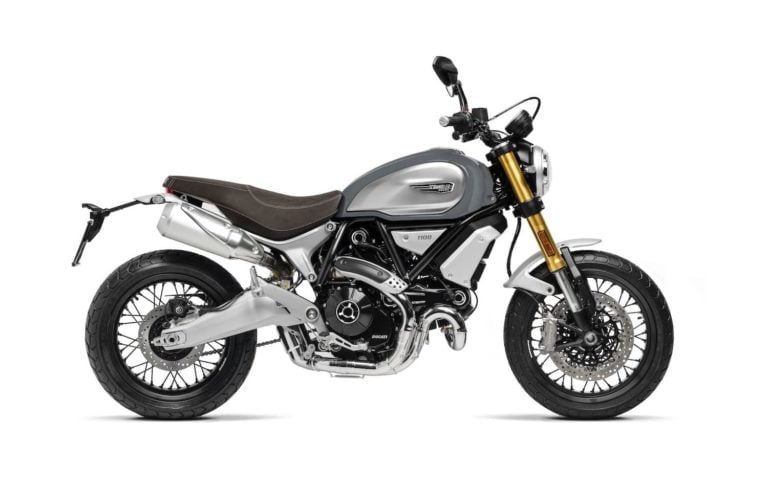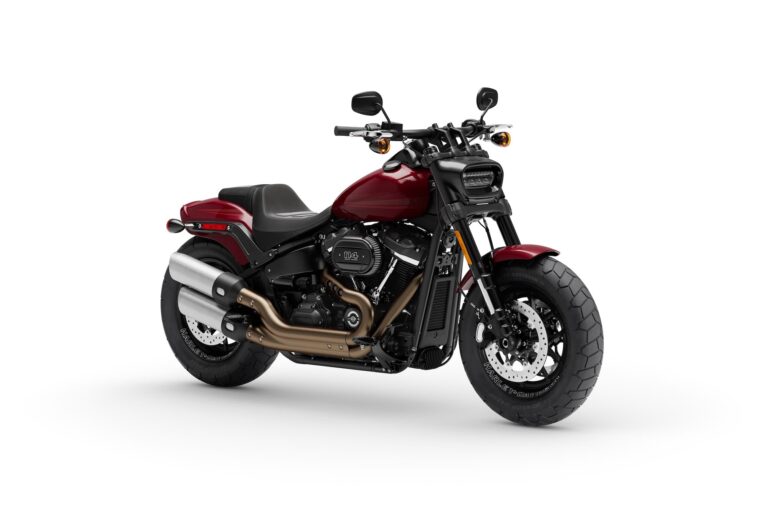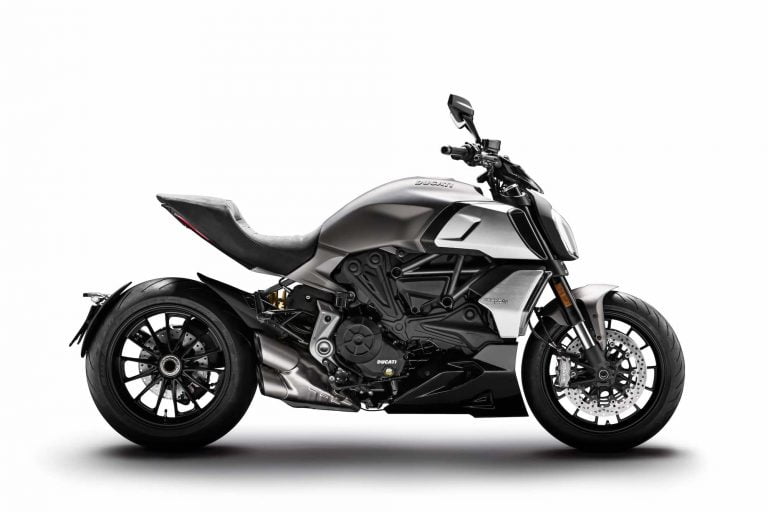Yamaha XSR900 (890cc, 2021+) Maintenance Schedule and Service Intervals
This is the maintenance schedule and associated service intervals for the 2022+ Yamaha XSR900 with the upgraded 890 cc engine, a significant upgrade over the earlier 2016-2021 Yamaha XSR900 with the 847 cc engine.
The 2022 model XSR900’s 890cc engine is the same as that used in the previously-released 2021 Yamaha MT-09 and MT-09 SP. It’s an inline three-cylinder engine (a triple) that’s liquid-cooled and has dual overhead cams. In the XSR900, the engine makes a claimed 87.5 kW (119 hp / 117.4 bhp) at 10,000 rpm, which is only a slight bump in power over the old gen XSR, but the new model has a generally fatter torque curve.
Final drive is via a six-speed box and chain, as before.
The XSR900 has some subtle differences with the MT-09 SP that warrant a different maintenance schedule, though there’s a lot of overlap.
This site has links for things like oil and spark plugs from which we earn a commission (which unfortunately nobody can save, not even us). If you appreciate this work, then please use those links. Thanks!
2022 Yamaha XSR900 Service Intervals
As with many Yamaha motorcycles, the service intervals for the XSR900 per the US and Europe manuals are slightly different.
| Model | US manual | Europe manual |
|---|---|---|
| Minor service intervals | 4000 mi / 6000 km 6 months | 10000 km / 6000 mi 12 months |
| Major service interval (valves) | 26600 mi / 42000 km | 40000 km / 24000 mi |
Given they’re the same bike and operate under similar conditions, it’s difficult to explain the difference in maintenance intervals between US and Europe manuals. This is common with Yamaha motorcycles but not with any other brand. (See here for more about the Yamaha Europe / USA difference schedules.)
Since the XSR900 has a liquid-cooled engine, keep the coolant fresh per the maintenance schedule. Same goes for the hydraulic brake fluid. However, it has a cable clutch, so no fluid there (just a cable to keep lubricated and maintained).
The XSR900 is a chain-driven motorcycle so pay attention to keeping the chain maintained, too. See below for notes on chain maintenance.
What you need to service the 2022 Yamaha XSR900 — Consumables and Special Tools
If you’re servicing the 2022 Yamaha XSR900 (890cc), you at least need motorcycle maintenance tools — things like an oil catch pan, a paddock stand, and so on.
For the Yamaha XSR900, the manual recommends the following specific consumables.
| Part | Yamaha XSR900 (2022+, 890cc) part spec |
|---|---|
| Engine oil | Yamaha recommends Yamalube 10W-40. The manual recommends “Yamalube” and it’s affordable, so why not! The manual has a whole section on “Why Yamalube” saying their oils come from “teams of specialists of mechanical engineering, chemistry, electronics, and track testing” and that Yamalube oils “have their own distinct characters and value”. Other high-quality synthetic oils include Motul 7100 10W-40 for example. |
| Oil filter | Needs to be changed every time you change the oil. The Yamaha part number is 5GH-13440-61. The Hiflofiltro equivalent is a HF204RC. |
| Engine coolant | Yamaha recommends an ethylene glycol antifreeze with corrosion inhibitors like Yamalube coolant. But a good alternative is — bear with me — Pro Honda HP coolant. |
| Spark Plugs | NGK LMAR9A-9 should be used per the manual. Make sure it’s gapped correctly to 0.8-0.9mm (with a gapping tool) and torqued with a torque wrench to 13Nm/10 lb-ft. |
| Air filter | The part number for the air filter is B7N-14451-00. You can also use a DNA performance air filter: P-Y9N21-01. |
| Front brakes | The Yamaha part number for the front brake pads is 5SL2580500. You can also use an EBC HH brake pad for extra bite and reduced fade, using part number FA252HH. |
| Rear brakes | The Yamaha part number for the front brake pads is 5VX2580600. You can also use an EBC HH brake pad for extra bite and reduced fade, using part number FA174HH. |
| Brake fluid | Use a DOT 4 fluid, e.g. Castrol DOT 4. |
And the following general consumables are useful as well.
| Description |
|---|
| Paddock Stand — Makes maintaining your chain or doing other maintenance much easier. |
| Motul chain paste — one of the most highly-regarded chain lubes. Easy to apply, doesn’t fling off. If you need more stuff, get the Motul chain care kit as an affordable package. |
| Always good to have on hand lithium soap-based grease for lubing external pivot points (like the swingarm) and bearings. |
| Use Protect all cable life to lubricate your cables and controls. |
Yamaha XSR900 (2022) Maintenance Schedule
Below is the maintenance schedule for the 2022+ Yamaha XSR900 with the 890cc CP3 engine.
The original maintenance schedule is broken up into emissions-related maintenance and general maintenance.
We’ve split it into 3 parts, more easily digestible
- The maintenance schedule — which differs for the US and Europe spec manuals
- The standard service checklist
- Chain maintenance
Yamaha XSR900 Service Schedule – US (miles)
This is the maintenance schedule in US manuals, with 4000-mile / 6-month service intervals.
At the end of the schedule, continue the maintenance schedule in the same pattern.
See below for the Europe service schedule in km.
| mi x 1000 | 0.6 | 4 | 8 | 12 | 16 | 20 | |
|---|---|---|---|---|---|---|---|
| km x 1000 | 1 | 7 | 13 | 19 | 25 | 31 | |
| Months | 1 | 6 | 12 | 18 | 24 | 30 | Every |
| Perform full service checklist (below). | ✓ | ✓ | ✓ | ✓ | ✓ | ✓ | |
| Change engine oil (warm engine before draining). Use Yamalube 10W-40 | ✓ | ✓ | ✓ | ✓ | ✓ | ✓ | |
| Replace oil filter (HF204RC) | ✓ | ✓ | ✓ | ||||
| Check spark plug condition. Adjust gap if necessary (0.8-0.9mm) and clean. | ✓ | ✓ | ✓ | ✓ | |||
| Replace spark plugs (NGK LMAR9A-9) | ✓ | ||||||
| Check and adjust valve clearance when engine is cold | 26600 mi | ||||||
| Replace air filter (P-Y9N21-01) Don’t clean with compressed air. | 24000 mi | ||||||
| Change brake fluid (Castrol DOT 4) and internal rubber parts of master cylinders and calipers. | 2 years | ||||||
| Replace brake hoses | 4 years | ||||||
| Moderately repack swingarm pivot bearings with lithium soap-based grease | 32000 mi | ||||||
| Check steering bearing assembly for looseness or notches. | ✓ | ✓ | ✓ | ✓ | |||
| Moderately repack steering bearings with lithium soap-based grease. | 12000 mi | ||||||
| Check operation of rear suspension link pivots. Correct if necessary. | ✓ | ✓ | |||||
| Change coolant (Pro Honda HP coolant) | 3 years | ||||||
| Check evap control system (if fitted) for damage. Fix/replace as necessary. | ✓ | ✓ |
Yamaha XSR900 Service Schedule – Europe (km)
This is the maintenance schedule for Europe/APAC-issue motorcycles, with 10000 km / annual service intervals.
| km x 1000 | 1 | 10 | 20 | 30 | 40 | |
|---|---|---|---|---|---|---|
| mi x 1000 | 0.6 | 6 | 12 | 18 | 24 | Every |
| Perform full service checklist (below) | ✓ | ✓ | ✓ | ✓ | ✓ | Year |
| Change engine oil (warm engine before draining). Use Yamalube 10W-40 | ✓ | ✓ | ✓ | ✓ | ✓ | Year |
| Replace oil filter | ✓ | ✓ | ✓ | |||
| Check spark plug condition. Adjust gap and clean. | ✓ | ✓ | ||||
| Replace spark plugs (NGK LMAR9A-9, gap 0.8-0.9mm) | ✓ | ✓ | ||||
| Check and adjust valve clearances | 40000 km | |||||
| Replace air filter (P-Y9N21-01) | 40000 km, or more often if riding in rain/dust | |||||
| Check / adjust idle engine speed | ✓ | ✓ | ✓ | ✓ | ✓ | Year |
| Check and adjust fuel injection and throttle body synchronisation | ✓ | ✓ | ✓ | ✓ | Year | |
| Change brake fluid (Castrol DOT 4) and internal rubber parts of master cylinders and calipers. | 2 years | |||||
| Replace brake hoses | 4 years | |||||
| Lubricate swingarm pivot bearings with lithium soap-based grease. | 50000 km (30000 mi) | |||||
| Check steering bearing assemblies for looseness. | ✓ | ✓ | ✓ | |||
| Moderately repack steering bearings with lithium soap-based grease. | ✓ | ✓ | ||||
| Change coolant (Pro Honda HP coolant) | 3 years | |||||
| Check evap control system (if fitted) for damage. Fix/replace as necessary. | ✓ | ✓ |
Standard Service Checklist
Below is the standard service checklist for the Yamaha XSR900. Do this at every service per the schedules above.
Items marked [FS] don’t have to be done at the first service (but it can’t hurt).
| Yamaha XSR900 — Standard Maintenance Checklist |
|---|
| [Dealers] Perform dynamic inspection using Yamaha diagnostic tool, and check the error codes. |
| Check fuel hoses for cracks or damage. Replace if necessary. |
| Check clutch operation. Adjust cable / replace as necessary |
| Check front brake operation, fluid level, and for fluid leakage. Replace brake pads if necessary. Check brake fluid regularly. |
| Check rear brake operation, fluid level, and for fluid leakage. Replace brake pads if necessary. |
| Check brake hoses for cracks or damage, and for correct routing and clamping. |
| Check wheel runout and for damage. Replace if necessary. |
| Check tire tread depth and for damage. Replace if necessary. |
| Check tire air pressure. Correct if necessary. |
| [FS] Check wheel bearings for smooth operation. Replace if necessary. |
| [FS] Check swingarm pivot bearing operation and for excessive play. |
| Make sure chassis fasteners (nuts, bolts, and screws) are properly tightened |
| [FS] Lubricate brake lever with silicone grease. |
| [FS] Lubricate brake pedal, clutch lever, and shift pedal with lithium soap-based grease |
| Check side stand pivot operation. Lubricate with molybdenum disulfide grease. |
| Check side stand switch operation and replace if necessary. |
| [FS] Check front fork operation and for oil leakage. Replace if necessary. |
| [FS] Check operation of rear suspension relay arm and connecting arm pivot points. Correct if necessary. |
| [FS] Check shock absorber operation and for oil leakage. Replace if necessary. |
| Check coolant level and vehicle for coolant leakage. |
| Check front and rear brake switch operation. |
| Lubricate control cables (Protect all cable life). |
| Check throttle operation. Lubricate throttle grip housing tube guides |
| Check operation of lights, signals, and switches. |
| Adjust headlight beam. |
| [FS] Check crankcase breather hose for cracks or damage. Clean / Replace if necessary |
| Check exhaust for leakage. Tighten, and/or replace gasket(s) if necessary. |
Maintaining Your Chain on the Yamaha XSR900
The XSR900 is a classic Yamaha motorcycle that’s good for everything from commuting to casual sports usage, so its chain gets a lot of abuse. So it’s important to maintain the chain.
Use a good-quality chain lubricant like Motul chain paste, which is well-regarded, or a Motul chain care kit which comes with a couple of handy tools to maintain the chain like cleaners and brushes.
Yamaha recommends you follow the following chain maintenance schedule every 600 mi / 1000 km and after washing the motorcycle, riding in the rain, or riding in wet areas.
| Chain maintenance item |
|---|
| Check drive chain lubrication condition, lubricating if necessary (Motul chain paste) |
| Check drive chain slack, alignment, and condition, adjusting / replacing if necessary (see below for guidance on drive chain slack measurement and adjustment |
Naturally, if you track or even race your XSR900, then attend to your chain more often.
To check the chain slack, you measure the distance between the chain and the chain guard (on the swing arm) as described below.
- Put the transmission in neutral, and put the bike on its kickstand on a level surface.
- Find the center of the chain. You don’t have to eyeball it; this is about 53 mm (or 2.1 in) from the end of the drive chain guard.

Push down lightly on the chain at this point, and measure the slack. Slack should be 45-50 mm (1.8-2.0 in) on the 2022 XSR900.
Note that these figures are slightly different to on the MT-09, as the XSR900 has a longer swingarm.
If the slack is out, adjust it, following this procedure
- Loosen the rear axle, and the lock nuts for the adjusters
- Turn the adjuster anti-clockwise (facing the front of the bike) to increase slack. Turn both adjusters by the same amount, watching the markings to make sure the alignment is intact.
- When you get to the correct amount of slack, tighten the rear axle (105 Nm / 77 lb-ft) and tighten the lock nuts (16 Nm / 12 lb-ft).
Tire sizes/pressures for the Yamaha XSR900
The manual specifies the following tire sizes and pressures for the 2022 Yamaha XSR900. Use these pressures as a starting point — adjust them to match the conditions, your weight, riding conditions, and your riding style.
| Wheel | Tire size | Tire pressure |
|---|---|---|
| Front | 120/70 ZR 17 M/C (58W) | 250 kPa (2.5 bar, 36 psi) |
| Rear | 180/55 ZR 17 M/C (73W) | 290 kPa (2.9 bar, 42 psi) |
The 2022 XSR900 ships with Bridgestone Battlax Hypersport S22 tires.
About the 2022 Yamaha XSR900
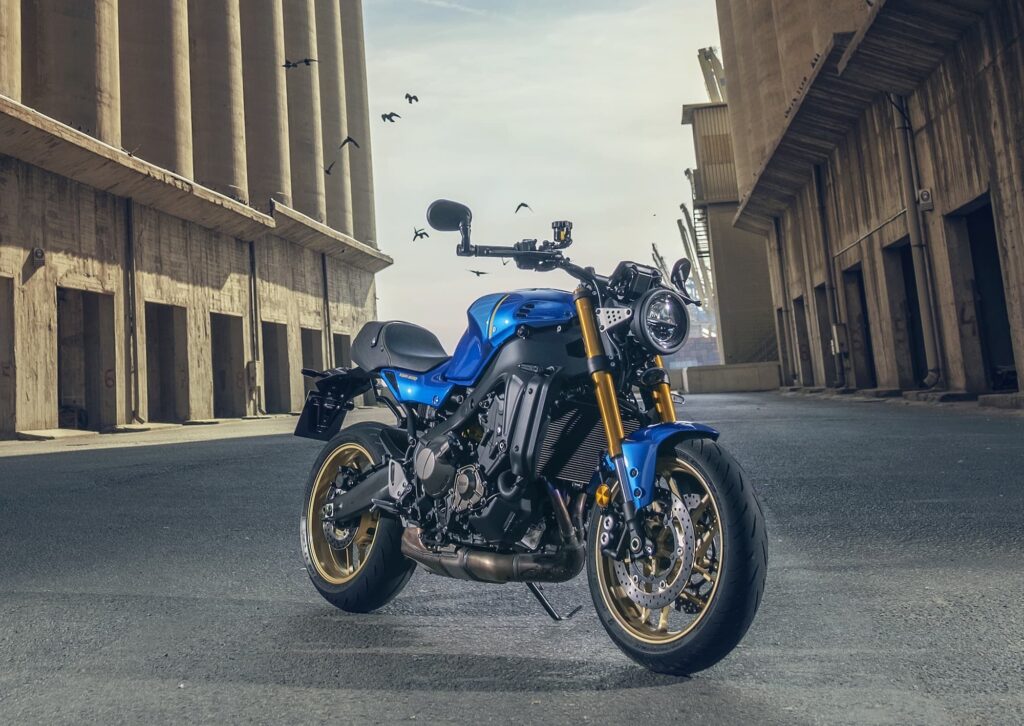
The 2022 XSR900 is an extensive revamp of the original model. At its core, it’s the same basic motorcycle — a sporty and modern but heritage-styled naked bike with a really feisty middleweight engine.
Like the first-gen XSR900, the 890 cc powered XSR900 has the same CP3 motor as its stablemate the MT-09. It powers a thoroughly modern but retro-inspired chassis with a round headlight, handlebars, and bar-end mirrors.
But interestingly, the XSR900 sits somewhere between the MT-09 and MT-09 SP in terms of specs. For example, the XSR900 lacks the Öhlins rear shock of the MT-09 SP, but it does get the cruise control unit. Luckily, the XSR900 does get the six-axis IMU (cornering ABS / Traction Control) that the MT-09 gets, too.
The engine in the XSR900 is an absolute stomper. This was true of the original 847 cc unit — torque everywhere, but still sportbike-like punch up top. The same is definitely true of the new XSR900 — there’s just even more in the mid-range.
The first-gen XSR900, much like the early MT-09, suffered from what many described as a snatchy throttle. It could be relieved by a tune from a competent tuner, so the problem was most likely fuelling and the classic on/off-behaviour of a leanly tuned fuel injection system for emissions.
Luckily, Yamaha has sorted this out with the new generation 890-cc CP3 engine. The motor is aggressive in sport mode, but not unwieldy, though it’s definitely smoother and easier to control in road mode.
In terms of ride, the XSR900 is positioned as being between the lunacy of the MT-09 and the maturity of the Tracer 9. And that’s exactly where it seems to fit, both in aesthetic design as well as how it performs on the road.
The combination of the longer swingarm and the handlebar position make the Yamaha XSR900 stable at higher speeds, though does make small-radius parking lot work slightly less easy.
One of the most wonderful and less often-cited things about the XSR900 is just how light it is for a powerful motorcycle. Ducati made a lot of noise about how much lighter their Ducati Monster 937 is than the outgoing 821, but the reality is that their 821 was just a heavy bike for the power it made. The 2021 Ducati Monster makes 111 hp and weighs 414 lbs wet, whereas the XSR900 makes 119hp and weighs 425 lbs wet. So — a barely-noticeable difference in weight, balanced out by the power, lower cost, and higher spec. (Of course, a Ducati buyer is always going to prefer a Ducati, and that’s fine!)
In terms of maintenance, the Yamaha XSR900 is much like its predecessor, with 4000 mile (US) or 10000 km (Europe) oil change service intervals, and valve service intervals a generous 40000 km apart.
The valve service is a relatively big job on most motorcycles, but thankfully there are no fairings to remove. You do have to remove the radiator for access though, as well as the tank, so it would be nice to flush the coolant at the same time. That means riding around 8000 miles or 13000 km a year. Try to get there!
Reference — Manual for the 890cc 2022 Yamaha XSR900
The above information was gleaned from the owner’s manual for the 2022 Yamaha XSR900, consulting the maintenance section, as well as other online resources for parts numbers.
Below are screenshots from both the European and US manuals as reference for the above.
You can download the US manual from Yamaha’s website here.
